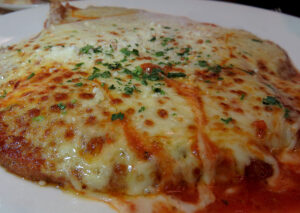We’ve all seen them. Those completely ridiculous descriptions of wine: “A lovely wine with exotic blackberry notes, exhibiting a hint of tar, pencil shavings and graphite, with a slight undercurrent of cigar box and wet stone.” Oops … and who could forget that “flash of wet leather on the mid-palate.” These wine reviewers must be from another planet – a planet where you suck on wet stones and nosh on wet leather. They are just playing with us, right? Not really. Wine descriptors are simply a shorthand way of communicating what the taster is experiencing using reference points that are familiar to the taster with the hope that the reader has similar reference points. Wine descriptors are actually pretty cool and they get a point across about a wine pretty effectively. Let’s explore:
While it is easy to dismissively chuckle when we read various wine descriptors, there is actually something to them. While no one sucks on stones or snacks on wet leather (actually I once knew someone …never mind), as we all know when we have a bad cold and your nose is stuffed up, you can’t really taste anything without being able to smell it. Indeed, other than the basic tastes of sweet, sour and salty, most of what we “taste” is actually what we smell. The reason is simple: There is a physical connection to our nasal cavity in the back of our mouths that allows us to actually smell food and beverages as we ingest them. So while we don’t suck on stones and eat wet leather, we do know what stones smell like after a summer shower and we know what a baseball glove or suede jacket smells like when it gets wet.
But can a simple beverage like wine really take on so many different flavors? And why do many of us not notice them in wine? There are some great lines in the old Goldie Hawn movie “Butterflies are Free” where Goldie parrots the well-known phrases “there are none so blind as those who will not see,” and “there are none so deaf as those who will not hear,” concluding “You can make up a lot of those…” I still really love that movie, but I digress (and show my age). Here we can simply and aptly say, “there are none so wine blind as those who do not open their minds, take some time, experience the aromas and flavors, experience the nuances,” Well, I think you get the point. The flavors and aromas in wine are real and they are there for the taking. And, you don’t have to take my word for that, as the science of taste will back me up (yes, there are scientists who work on that). Merely by way of example, certain grapes contain certain compounds that have specific tastes, such as Sauvignon Blanc which contains methoxypyrazines that impart a green pepper or grassy taste, and Syrah and Gruner Veltliner contain the compound rotundone which imparts a peppery flavor. When many such compounds found in grapes are combined with the effects of fermentation and its by-products along with all of their combined interactions with each other, many hundreds of different aromatics are produced in wine that we can detect.
And wine descriptors are of course to some extent somewhat personal, based on the personal perceptions and experiences of whoever is describing the wine, as we all have different taste buds, food and aroma experiences, etc. One person’s dark cherry is another person’s blackberry. One person’s wet slate is another person’s wet pebbles. By way of example, if someone never tasted (or smelled) guava, they certainly couldn’t and wouldn’t find that taste in a wine. They would perhaps draw on a similar fruit that is familiar to them.
All of this is a long-winded way of saying that wine descriptors are not complete B.S. (although I do think some wine writers are having a bit of “fun” with it) and wine has very complex aromas/flavors with lots to offer to those who care to experience them. Just try some very aromatic wines such as Sauvignon Blanc, Torrontes or Gewurztraminer and you will quickly see how wonderfully complex wine aromas can be. A few of my favorites are: Fabre Montmayou, Torrontes, Mendoza, Argentina (under $15), Trimbach Gewurztraminer, Alsace, France (about $25) and a great Sauvignon Blanc from the Sancerre region of the Loire Valley, Pascal Jolivet (about $30).
Cheers!
Cuvée Ray
If you enjoyed this article please join the Cuvée Ray Wine Lovers Facebook Group by CLICKING HERE for some fun wine discussions among wine lovers.































